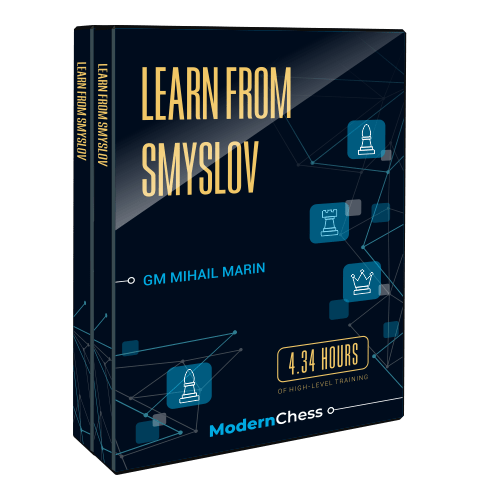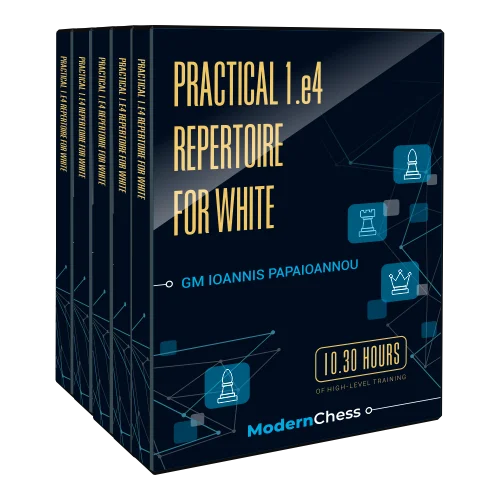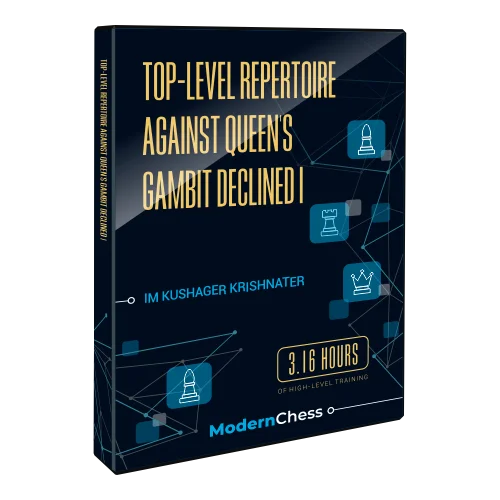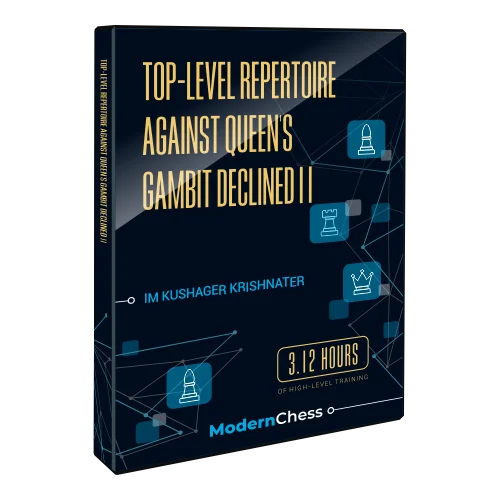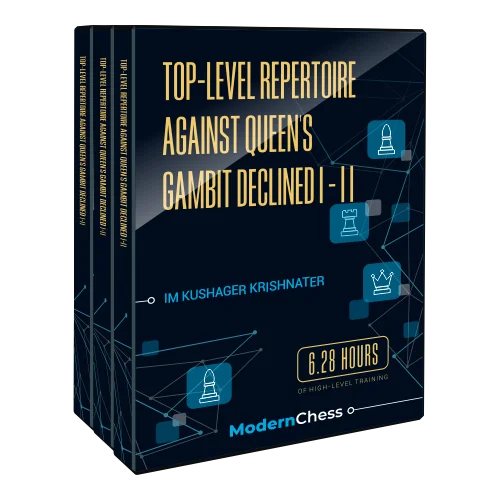We are more than happy to announce that GM Mihail Marin restarts his series on chess classics with a new course - Learn from Smyslov. Contrary to all previous databases from the series, this course comes with a Video Version (4 hours 34 mins Running Time). Additionally, the size of the current product is considerably bigger.
We are more than happy to announce that GM Mihail Marin restarts his series on chess classics with a new course – Learn from Smyslov. Contrary to all previous databases from the series, this course comes with a Video Version (4 hours 34 mins Running Time). Additionally, the size of the current product is considerably bigger.
He has structured the material in this database keeping in mind Smyslov’s favorite word, “Harmony.” Some sections may seem a bit casual, but they are all crossed by the red thread of our main theme.
The material consists of 35 extensively annotated games of Smyslov and 31 exercises. All the solutions are annotated as well.
Preview by the Author:
Very few outstanding players could define their whole career synthetically. For Kortschnoj, the slogan was “Chess is my life.” I have several editions of his autobiographies and best games collection with this title. These words do not explain Kortschnoj’s style or thinking in any way but explain his outstanding results until a very advanced age.
Vassily Vassylievich Smyslov gave us a clear reference to his style and aims. I have two editions of his best games collection in Russian, titled “The Quest for Harmony.” The Italian edition maintained this title. As an accomplished baritone singer, harmony must have been very dear to Smyslov. The question remains, how would this apply to his play? Since Vassily Vassylievich himself does not give us a clear answer, I will explain my perception of this matter.
Part of the complexity of our favorite game is generated by the need to corroborate the actions of several pieces with different ways of acting. A chess army can be like a symphonic orchestra, needing a director to maintain optimal coordination. We can also call this optimal situation “harmony.” When analyzing Smyslov’s games, we can notice his tendency to the global harmony of his position, most likely using his intuition.
For Smyslov, dividing the game into opening, middlegame, and endgame did not seem to make too much sense. He was constantly aiming at playing perfect games, with a tight connection between the three phases of the game. The same applies when we think of the methods used in his games. For Smyslov, tactics and strategy were just two complementary sides of the medal. Widely considered a positional player, he used to resort to small tactical nuances in order to maintain strategic control. The reversed connection is no less important. Considering that he had outplayed his opponent positionally, Smyslov would always try to crown his efforts with a combination.
I must confess that I have studied Smyslov’s games relatively late. Being familiar with Karpov’s style, I was hit by a shocking thought. It seemed to me that Smyslov was the prototype for Anatoly Evgenievich! Karpov was guided by the same principle of unity between strategy and tactics when annotating his games. As mentioned in the introduction to my database on Karpov, he sometimes overlooked (or intentionally hid) important imperfections in his games. I did not feel this when going through Smyslov’s games and comments. I also feel that Smyslov produces no fewer chess gems than Karpov.
Anatoly Evgenievich held the World title for ten years and was one of the best two players for another ten years. Smyslov held the title for just about one year (1957-58), the same as Tal. If we judge by the sportive results, Karpov’s career was far more glorious than Smyslov’s. Moreover, in the ’60s and ’70s, he only once qualified for the Candidates, when he lost clearly in the quarterfinals against Geller in 1965.
I believe that this huge difference revealed by the statistics is mainly caused by Karpov’s by far superior qualities as a fighter, something I have written about in due time. Smyslov enjoyed playing, and Karpov was in permanent need to win. However, Smyslov is more impressive than Karpov in terms of longevity.
After the decades mentioned above, during which he was just a top grandmaster, never coming close to the supreme crown again, the miracle happened in 1983. At the age of 62, Smyslov reached the Candidates’ final, where he lost to the young Garry Kasparov, who soon managed to defeat Karpov. During the next years, Smyslov continued playing very good chess and produced a series of brilliant games. His experience accumulated over the years makes these games no less consistent and instructive than those from his first youth.
It is unclear what could have caused such a comeback, but I believe it is obvious what made it possible. The rightness of Smyslov’s approach and understanding, his refined intuition, was revealed once more. The curious thing is that during his second youth (I refer to the ’80s), Smyslov never gave up his earlier tendency of relying on tactical nuances or ending the games in a tactical style.
It was not enough that he outplayed his younger opponents strategically; he also calculated better than them. To me, only the latter remains a deep mystery.
Outline:
Chapter 1. Introduction
Chapter 2. Harmony
Chapter 3. Entropy
Chapter 4. Fluent Play
Chapter 5. Attack
Chapter 6. Sicilian Structures
Chapter 7. The Maroczy Bind
Chapter 8. Mobile Centre
Chapter 9. Centre Under Tension
Chapter 10. Complicated Battles
About the Author:
GM Mihail Marin [FIDE 2463]
is a Romanian chess Grandmaster and a very popular chess coach and author. Marin’s first major success in international chess was qualifying for the Interzonal in 1987.
He has won the Romanian Championships on three occasions and has played in the Chess Olympiads ten times, winning a bronze individual medal in 1988. For several years he was the editor of the magazine Chess Extra Press.
GM Mihail Marin is one of the most respected coaches in the world today having trained the young Judit Polgar and being praised for his ability to explain deep chess truths in a way improving players can understand.
